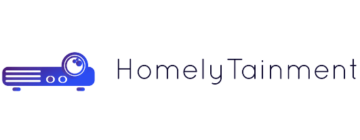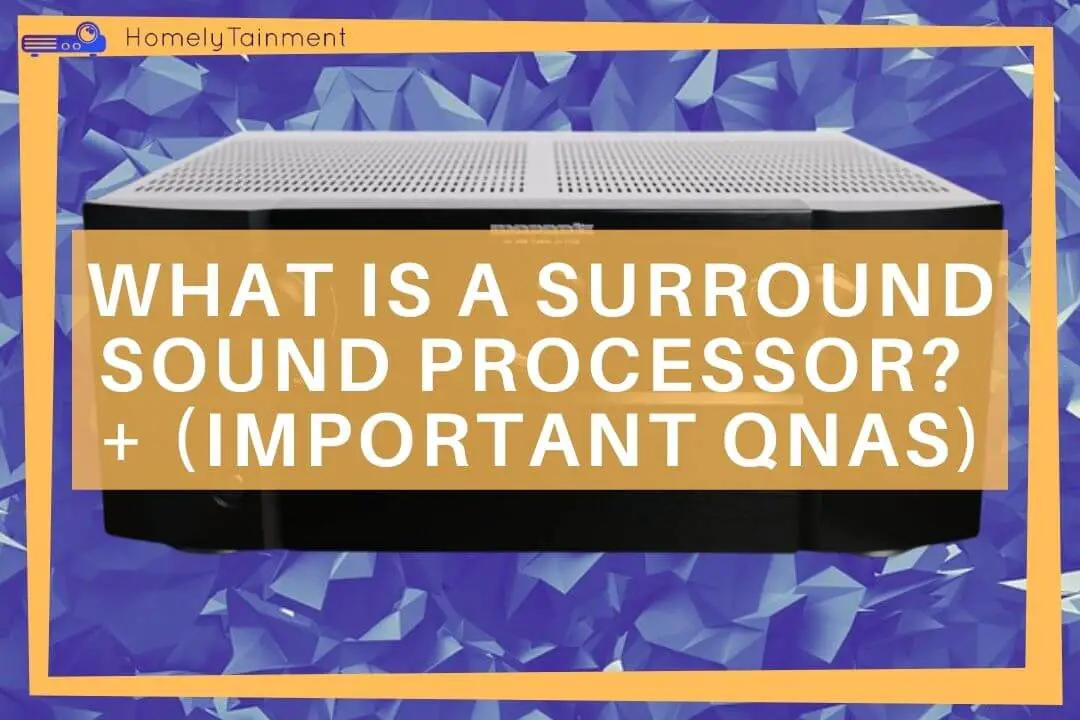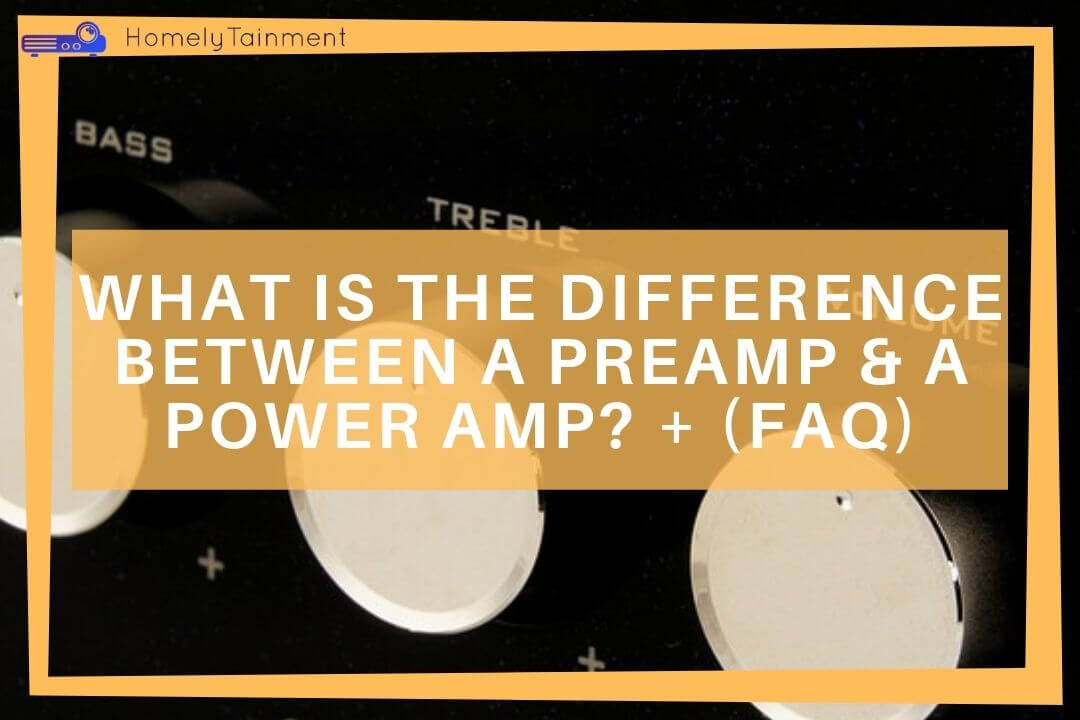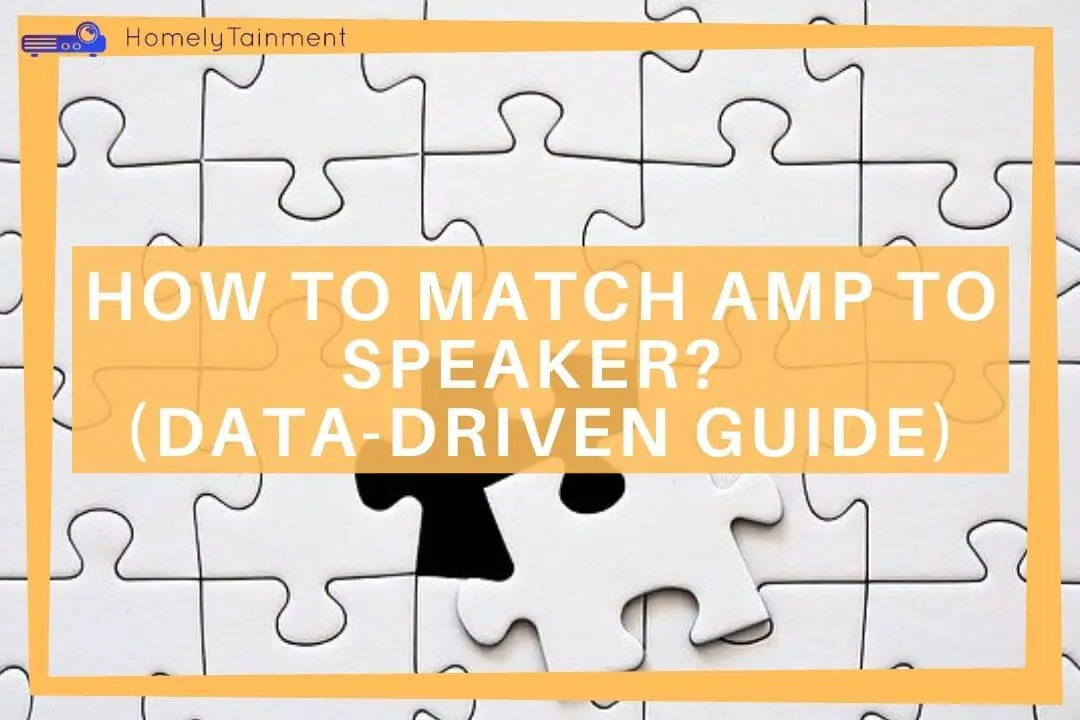
Homelytainment earn commissions (at no additional cost to you) if you purchase products from retailers after clicking on a link from our site.
Matching the watts of the speaker to the amp is critical. You should choose the amp watts thoroughly if you want smooth running of your home theater audio system. So, How to match amp watts to speaker Watts?
At A Glance: As a general rule of thumb, the amp watts should be %50 to 53 more than the speaker watts at its nominal impedance. After that, everything will work fine. For a 100 watts speaker with 4 ohms nominal watts, you need an amp of 153 watts at 4 ohms.
Keep reading, as well as discuss many more aspects of this angle. I will also be answering some of the most important related questions to it.
How to match speaker and amp in a nutshell
| Speaker Watts | Needed Amp Size |
|---|---|
| 200 watts | 306 watts at its nominal impedance |
| 300 watts | 459 watts at its nominal impedance |
| 400 watts | 612 watts at its nominal impedance |
| 500 watts | 765 watts at its nominal impedance |
| 700 watts | 1071 watts at its nominal impedance |
| 1000 watts | 1530 watts at its nominal impedance |
You will have to carefully match the watts and nominal impedance of the speaker to the amp for smooth working. Keep reading as we will be discussing where to find this nominal impedance and watts of the speakers and the amplifier.
We will be discussing many more questions and scenarios.
Know why speakers cut out at high volume? This issue is related to the ohms of the amp. I have a data table in this guide too.
Why match the watts?
When the amp satisfies the %50 to %53 more power rule for the speakers at its nominal impedance. The following will happen.
The speakers will get enough power to drive their drivers comfortably. You will get a good-quality sound and the speakers will last for longer.
The Amplifier will not feel any fatigue and will drive the speakers without any discomfort.
Also, there will be no chance of the speaker or amplifier wearing out or blowing.
The audio system will last longer and will require less effort and time for maintenance.
Read my this guide, why use preamp and poweramp? You will know more about high-fi home theater audio.
What happens if Amp is not powerful enough or overpowering?
The mismatch will bring serious consequences.
If the amp overpowers the speakers by more than the %50 to %53 then the speaker will blow up.
If the speaker overpowers the amplifier then the amplifier will blow up.
That’s why it is necessary to keep the %50 to %53 power rating in your mind while choosing the amplifier and speakers for your home theater.
Why match the nominal impedance?
A higher-ohms speaker should be connected to the lower-ohms amplifier.
Consider the lower ohms as a wider road with two lanes and higher ohms as a narrow road with a single lane.
Now, suppose you connect the 4-ohm speakers to the 8 ohms amp. The connection will create a mess. The speakers will blow. Because 2 lane of traffic will try to go through a single-lane road.
That’s why I always match the ohms by connecting higher ohm speakers to lower ohm amps.
Don’t want to repeat what will happen if the ohm doesn’t match because it will bring the same consequences as watts.
Read my guide, how to optimize home theater audio. You will know pro audio tweaks.
Know more from this video
How do you find the nominal impedance and watts of both the speaker and amp?
Every speaker and amplifier’s ratings will be written in its user manual or at the back of it. But if you are buying both of them online. Then there is a very easy method to find the impedance and watts of both the speaker and amplifier.
1. How many watts do my speakers need?

Head over to the Crutchfield and search for the speaker model. Now, scroll down to the product highlights section. Search for impedance and power handling. Sometimes this power handling will be represented as RMS power. These are the two values that you need to match an amp with it.
2. How do I choose the right amp for my speakers?
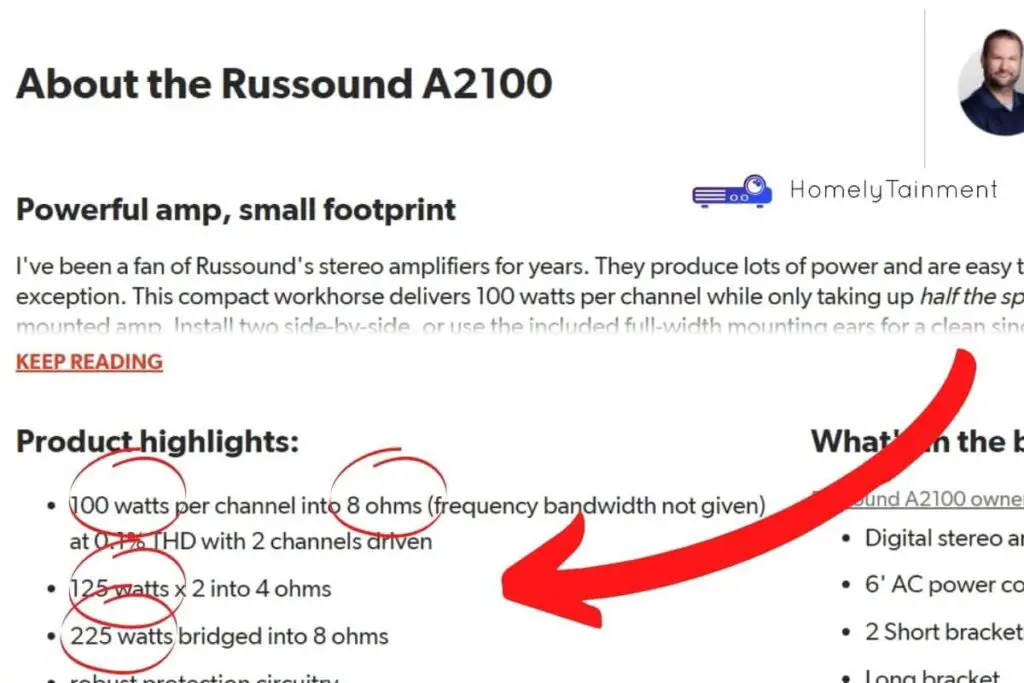
Again head over to the Crutchfield site and search for the amp model. And look for the highlighted values and see if it can pass the %50 to %53 more power than the speaker at its nominal impedance. Then choose that amp because now this is the best fit for you.
Here this amp can provide 100 watts for 2 channels at 8 ohms and 125 watts at 4 ohms.
If your left and right speakers are 70 watts and have a nominal impedance of 8 or 6 ohms then this amp is perfect for you. You can power all other surround speakers by the receiver as they don’t need that much power.
Did you get something out of this Amplifier guide? Hold On We Have Something Exciting To Share.
[the_ad id=”4771″]FAQs
How much power is too much for speakers?
If the amplifier is 65% more powerful than the speaker watts then this power is too much for the speakers.
If this power won’t blow the speakers right away then it will blow them up very shortly. So always try to choose an amp that is 50% to 53% more powerful than the speakers and not more than that.
Can an amplifier damage speakers?
The amplifier will damage the speakers in two cases if the supplied signals are not clean and if the supplied power is more than what the speakers can handle.
The signals should always be refined by a preamp for natural sound and better health of the speakers.
Another thing is to not choose a huge power-capable amplifier for a lower-power speaker. These two errors will damage the speakers.
Is it better to overpower or Underpower speakers?
It is not better in both cases. Always power the speakers with enough power and not under or overpower them.
Enough power is the %50 to %53 and lower than it is underpowering and higher than it is overpowering.
How do you balance amps and speakers?
The amplifier should be able to deliver %50 to %53 more power than the speaker’s rated power at the speaker’s rated nominal impedance.
You have to match both the impedance and watts to make the speaker and amp work fine. Otherwise, they are unbalanced.
Helpful Resources For The FAQs To Read More
- Know how to match preamp and power amp. I have included easy rules in this guide. (Resource for the second answer)
- This was my opinion, read more about it on AVSforum. (Resource for the third answer)
